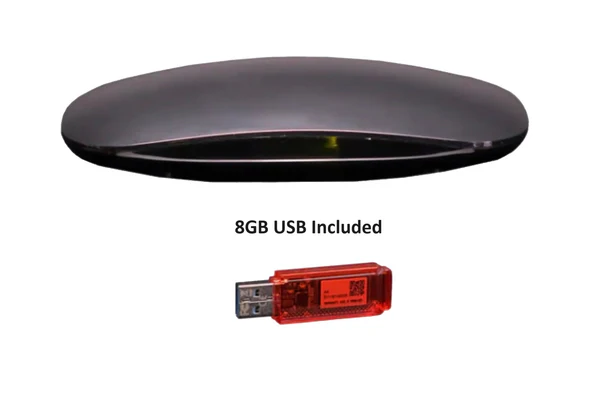A Digital Video Recorder (DVR) has become an essential device for many TV viewers, offering the flexibility to record, store, and watch television shows at a later time. DVRs have revolutionized how people interact with TV, making it more convenient than ever to catch up on missed programs. This guide explores the benefits, features, and functionalities of DVRs, providing valuable insights into how these devices can enhance your television-watching experience.
What is a DVR?
A DVR is a device that records digital television signals onto a hard drive or storage device. It works by capturing TV broadcasts and saving them for future playback. Unlike traditional VCRs, DVRs allow for easy navigation of recorded content, eliminating the need for physical tapes. DVRs typically integrate with cable, satellite, or over-the-air TV signals, offering users a variety of ways to record and store their favorite shows.
How Do DVRs Work?
DVRs use a combination of hardware and software to capture and store television broadcasts. When a show is scheduled to air, the DVR automatically tunes into the broadcast and records it onto its hard drive. Users can then access the recorded content at any time, pause, rewind, or fast-forward through the program. The device also allows for scheduled recordings, so viewers never miss a show, even when they’re away from home.
Benefits of Using a DVR
The primary benefit of using a DVR is the ability to record shows and watch them at a more convenient time. This feature eliminates the constraints of live TV viewing and offers more flexibility in how content is consumed. DVRs also allow users to pause live TV, skip through commercials, and create custom playlists of their favorite programs.
Types of DVRs Available
There are several types of DVRs, each designed to meet different needs. Some DVRs are specifically built for use with cable or satellite TV providers, while others are standalone devices that can be connected to over-the-air antennas. Cloud-based DVRs are also becoming increasingly popular, offering remote access to recordings and the ability to store content online.
DVR Storage Capacity Explained
Storage capacity is a crucial consideration when choosing a DVR. DVRs come with varying amounts of built-in storage, ranging from a few hundred gigabytes to multiple terabytes. The more storage a DVR has, the more shows it can record and store. However, higher storage capacity often comes with a higher price tag. It’s important to select a DVR with enough storage to suit your viewing habits.
DVR Recording Features
DVRs are equipped with various recording features that enhance the user experience. Many devices allow users to record multiple shows simultaneously, making it easier to watch multiple programs without worrying about overlapping airtimes. Some DVRs also offer advanced scheduling options, such as the ability to record all episodes of a series automatically.
How to Set Up a DVR
Setting up a DVR is typically a straightforward process. Most DVRs come with detailed instructions and can be easily connected to your TV, cable box, or antenna. After connecting the device, users can set up their recording preferences and start recording their favorite programs. Some DVRs also require a subscription to a cable or satellite service to function properly.
DVR and Streaming Services
Many modern DVRs can integrate with streaming services like Netflix, Hulu, and Amazon Prime Video. This integration allows users to record shows from streaming platforms in addition to traditional TV broadcasts. By connecting a DVR to a streaming service, you can expand your recording options and enjoy a broader selection of content.
Managing Recorded Content on a DVR
Once shows are recorded on a DVR, users can manage their content through the device’s interface. DVRs allow for easy deletion of unwanted recordings, organizing recorded shows into categories, and searching for specific episodes or seasons. This management system ensures that users can quickly find and enjoy their favorite content.
What to Look for When Buying a DVR
When purchasing a DVR, there are several factors to consider. Storage capacity, compatibility with your TV service, and the ability to record multiple shows are essential features to look for. You should also check for additional features, such as fast-forward and rewind capabilities, as well as ease of use in navigating through recorded content.
DVR vs. VCR: The Key Differences
While both DVRs and VCRs serve the purpose of recording TV shows, there are several key differences between the two. DVRs are digital devices that store content on a hard drive, offering better quality and more convenient features, such as the ability to pause and fast-forward live TV. VCRs, on the other hand, rely on analog tapes, which can degrade over time and offer fewer playback options.
DVRs and Cable TV Providers
Many cable TV providers offer their own DVR services as part of their subscription packages. These DVRs are typically integrated with the provider’s cable box, allowing users to record shows directly from the service. Some cable providers offer advanced features, such as the ability to record content from different channels simultaneously or remotely.
How Much Does a DVR Cost?
The cost of a DVR can vary depending on the brand, features, and storage capacity. Basic DVRs may start at around $50, while high-end models with advanced features and large storage capacities can cost several hundred dollars. In addition to the upfront cost, some DVRs may require a subscription or additional service fees, depending on the provider.
Common DVR Problems and Solutions
DVRs can experience technical issues from time to time. Common problems include insufficient storage space, recording errors, and difficulty accessing saved content. To resolve these issues, users can try troubleshooting solutions, such as freeing up storage by deleting old recordings, rebooting the device, or checking for software updates.
Frequently Asked Questions
Can I use a DVR without a cable subscription?
Yes, it’s possible to use a DVR without a cable subscription by connecting it to an over-the-air antenna. This allows you to record free broadcast TV channels.
Can I record streaming services with a DVR?
Many modern DVRs are capable of recording content from streaming services like Netflix and Hulu, though some may require additional setup or subscriptions.
How long do recordings stay on a DVR?
The length of time recordings stay on a DVR depends on the available storage. Once the storage is full, the DVR may automatically delete older recordings to make space for new ones.
read for more














































